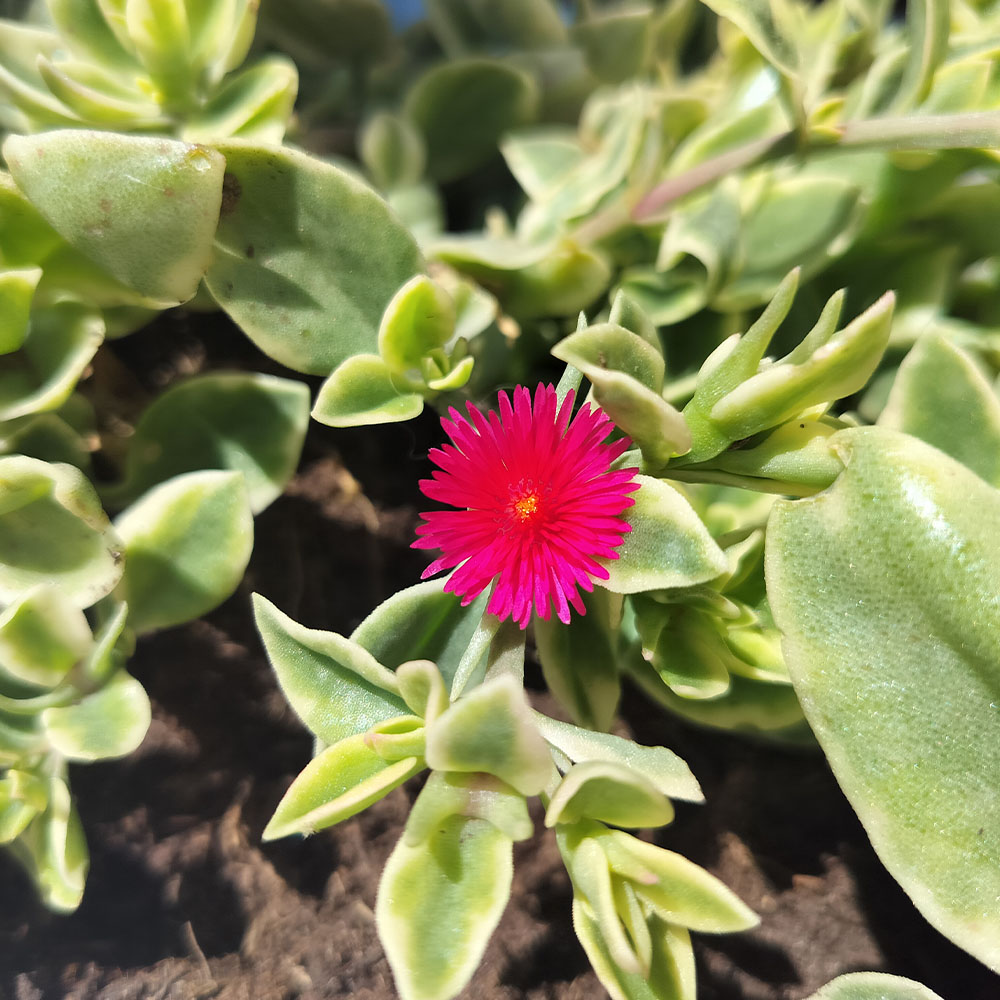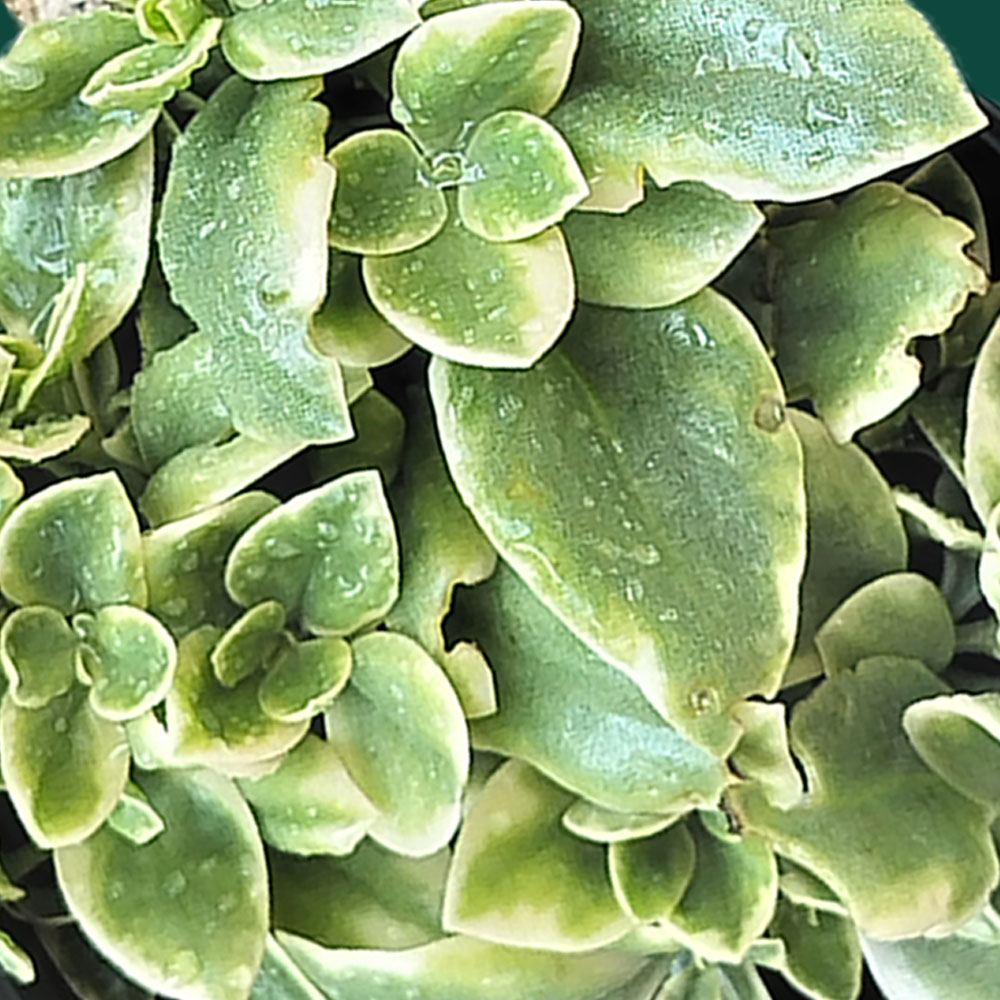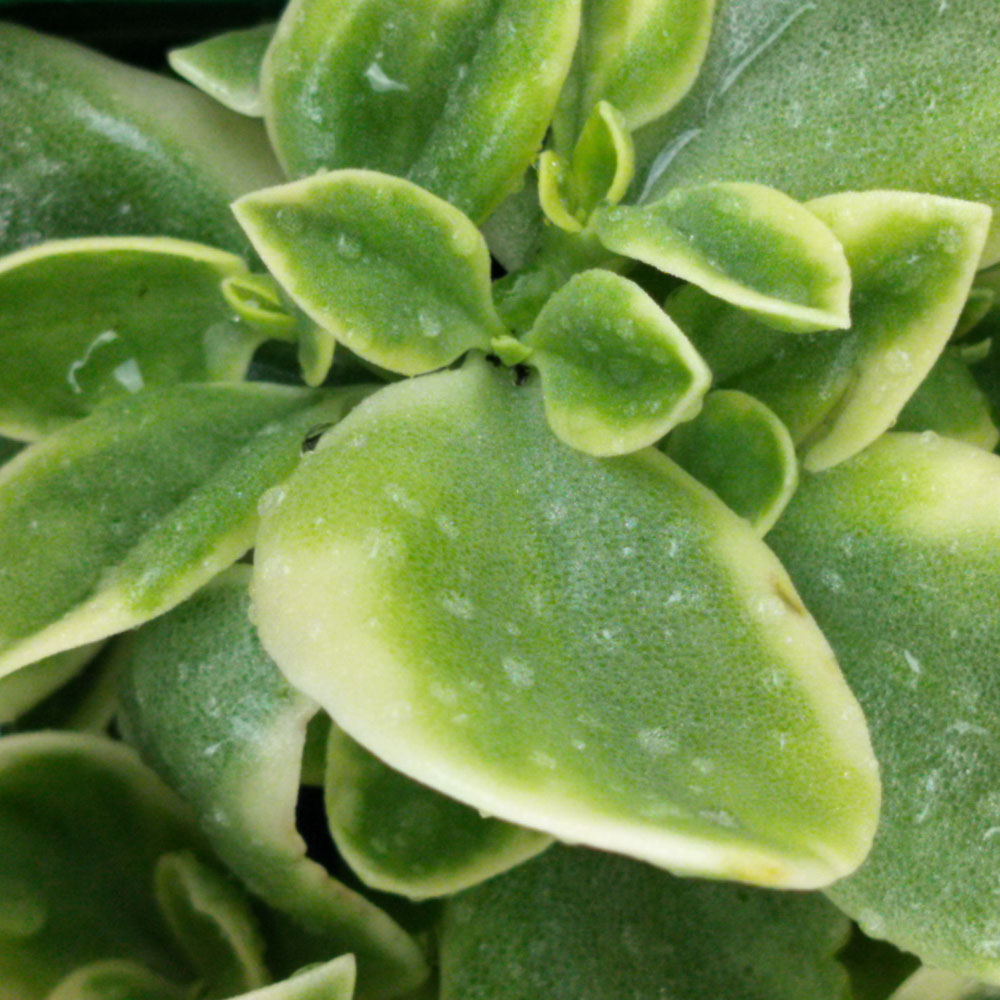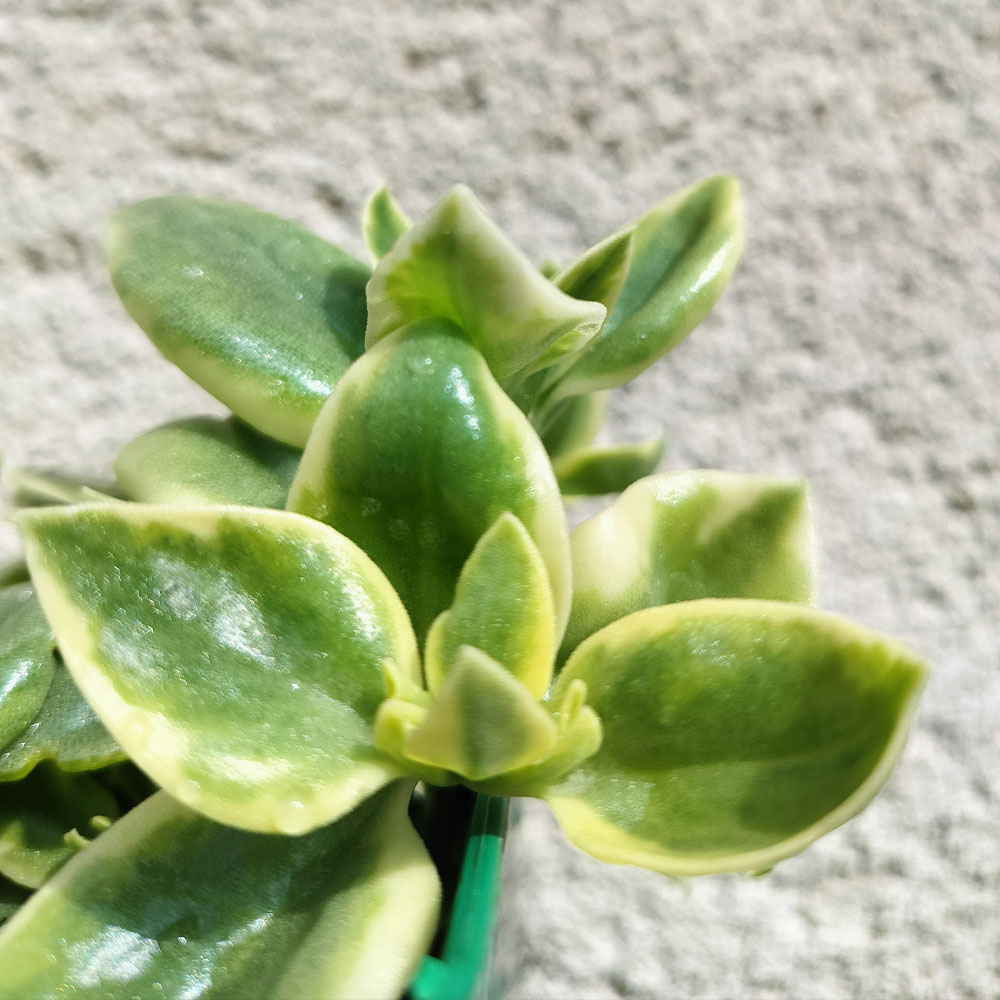No products in the cart.
Aptenia cordifolia Variegata
A succulent plant in the iceplant family with bright carmine flowers.
Rated 0 out of 5
0 customer reviews
4,90 € – 12,00 €Price range: 4,90 € through 12,00 €
Tags: chaud, couvre sol, evergreen, fleurs, perennial, persistant, plant, potted plant, soleil, vivace, vivace en pot, xeriscaping
SKU: pda171
Category: Balcony-Friendly, Bees and Butterflies, Bouquet, Evergreen, Ground Cover, Make it Pop, The Stunners

Aptenia cordifolia Variegata
4,90 € – 12,00 €Price range: 4,90 € through 12,00 €
Aptenia cordifolia Variegata – also known as Mesembryanthemum cordifolium – is a species of ground covering, drought tolerant succulent plant with stunning vermillion flowers.
In their home land of South Africa, they are known vygies and they form part of the scientific family Aizoacea, also known as Mesembryanthemaceae—a mind melting word that is frequently shortened to “mesembs”.
Formerly known as (and sometimes still called) Aptenia cordifolia, this plant has particularly beautiful variegated white and green leaves.
The leaves are heart shaped, succulent leaves are covered in epidermal bladder cells that glisten in the sun.
-
- These bladder cells are water storage structures that the plants deploy to survive the hot dry summers.
- They may also help in keeping the plant temperature down – maybe this is why they are called the Ice Plants?
The flowers are carmine red, daisy-like flowers all throughout the summer.
👨🌾GARDENING TIPS👨🌾:
-
- The Ice Plants are not at all hardy so make sure they are protected in the winter if your area gets frosty.
- Looks great with Kalanchoe, Crassula, Graptopetalum – all frost sensitive so they can travel inside together!
- Due to its quick growth, it is useful to prevent the growth of weeds.
Learn more about gardening with the Aptenia/Mesembryanthemum family:
The Tales & The Botany: Aptenia cordifolia Variegata
The name Mesembryanthemum is derived from the Greek, mesēmbria (noon) and anthemon (flower) because the flowers only open at midday.
They normally only open in bright sunlight and when it is warm, but sometimes you can get lucky.
Delosperma cooperii – another plant in our collection – is a distant cousin!
🌸 Floral Morphology:
The flowers of Aptenia cordifolia Variegata are solitary, daisy-like, and brightly colored, typically magenta with numerous yellow stamens at the center.
Each flower measures about 2–3 cm across. Leaves are opposite, fleshy, and heart-shaped, with creamy variegated edges that create visual interest even when the plant is not in bloom.
The trailing stems can reach up to 30–50 cm in length, forming a cascading mat of colorful foliage and flowers.
When touched, the leaves are succulent and smooth, adding a tactile dimension to garden plantings.
🌱 Reproductive Biology
Aptenia cordifolia Variegata is hermaphroditic, capable of self-pollination, though cross-pollination by insects such as bees and hoverflies increases seed production.
Flowering occurs from late spring through summer, and fruits are small capsules containing numerous seeds.
The plant also propagates readily from stem cuttings, making it easy to expand groundcover or cascading displays.
Its vibrant flowers and succulent foliage attract pollinators while offering low-maintenance beauty.
🌍 Écologie & Adaptations
Aptenia cordifolia Variegata thrives in temperate and Mediterranean-style gardens, particularly in:
-
- Borders and rockeries: Forms dense mats of aromatic foliage and radiant golden flowers, filling gaps and adding visual interest.
- Pollinator-friendly beds: Flowers provide abundant nectar for bees, butterflies, and hoverflies.
- Sunny, well-drained sites: Full sun encourages prolific flowering and keeps the plant compact, even in poor soils.
Key adaptations include:
-
- 💦 High drought tolerance once established: Hairy, silvery leaves reduce water loss and help the plant survive dry conditions.
- ☀️ Sun-loving: Performs best in full sun but tolerates partial shade.
- 👍 Low-maintenance: Aromatic foliage deters some pests, and the plant requires minimal care.
- 🌸 Long flowering period: Ensures continuous visual impact and nectar supply for several weeks.
- 💪 Self-supporting, compact habit: Ideal for front-of-border planting, rockeries, and container use.
Other Names
Baby sun rose, Heart-leaf, Aptenia in English,
Tooi brakvygie in Afrikaans
Ibohlololo, uncolozi omncane in isiZulu
Origin:
South Africa
| Weight | 0,2 kg |
|---|---|
| Container Size | 9×9 cm, 2L |
| Flower Color | 🩷 Pink |
| Flowering | June, July, August, September |
| Exposure | Full Sun |
| Frost Tolerance | NONE |
| Soil | Rocky/Well-Draining |
| Size | 0.1m H x 0.6m W |
Reviews
0
Rated 0 out of 5
0 customer reviews
5
0
4
0
3
0
2
0
1
0
Only logged in customers who have purchased this product may leave a review.
Related Products
Melissa officinalis
A perennial plant in the mint family that is adored by bees, royal families and tea drinkers.
A perennial plant in the mint family that is adored by bees, royal families and tea drinkers.
Rated 0 out of 5
Hellebore argutifolius
Winter flowering perennial with marbled blue-green leaves
Winter flowering perennial with marbled blue-green leaves
Rated 0 out of 5
Erigeron kavinskianus
A daisy-like carpet of flowers
A daisy-like carpet of flowers
Rated 0 out of 5
Delosperma cooperi
A dwarf perennial known for its vermillion colored flowers
A dwarf perennial known for its vermillion colored flowers
Rated 0 out of 5
Stachys byzantina
Silky white-grey leaves and tall striking flowers
Silky white-grey leaves and tall striking flowers
Rated 0 out of 5
Kalanchoe daigremontiana
A toothy succulent from Madagascar, known as the Mother of Thousands.
A toothy succulent from Madagascar, known as the Mother of Thousands.
Rated 0 out of 5
Hieracium maculatum Leopard
A native perennial with blue-green leaves and a tall yellow flower
A native perennial with blue-green leaves and a tall yellow flower
Rated 0 out of 5
Trachelospermum asiaticum ‘Ogon Nishiki’
Jasmine with colorful foliage and lovely white flowers in summer
Jasmine with colorful foliage and lovely white flowers in summer
Rated 0 out of 5
Tanacetum densum subsp amani
A shrublet composed of soft, finely divided silvery gray-white leaves.
A shrublet composed of soft, finely divided silvery gray-white leaves.
Rated 0 out of 5
Mentha x piperita ‘Chartreuse’
A spicy mint, known for its use in the production of liqueurs and herbal teas.
A spicy mint, known for its use in the production of liqueurs and herbal teas.
Rated 0 out of 5
Glechoma hederacea
A sweet smelling ground cover, producing little blue flowers all summer long.
A sweet smelling ground cover, producing little blue flowers all summer long.
Rated 0 out of 5
Euphorbia myrsinites
Known for its draping form of silver-gray foliage and radiant blooms.
Known for its draping form of silver-gray foliage and radiant blooms.
Rated 0 out of 5
Tradescantia Blushing Bride
Gorgeous blushes of pink and white that appear in the coldest nights.
Gorgeous blushes of pink and white that appear in the coldest nights.
Rated 0 out of 5
Artemisia Valerie Finnis
A semi-evergreen, aromatic variation on the theme of Artemisia.
A semi-evergreen, aromatic variation on the theme of Artemisia.
Rated 0 out of 5
Vinca minor
Looping elegance and ability to form a low flowering ground cover
Looping elegance and ability to form a low flowering ground cover
Rated 0 out of 5
Echinacea purpurea
A perennial with purple flowers all summer long
A perennial with purple flowers all summer long
Rated 0 out of 5
Euphorbia cyparissias Clarice Howard
A Euphorbia that resembles a soft little cyprus tree
A Euphorbia that resembles a soft little cyprus tree
Rated 0 out of 5
Sedum album
A low, multi-color ground cover.
A low, multi-color ground cover.
Rated 0 out of 5
recent view product
Geranium macrorrhizum
A fragrant ground cover with pale pink flowers
A fragrant ground cover with pale pink flowers
Rated 0 out of 5
Helichrysum orientale
A perennial with soft, ash gray foliage and yellow button flowers
A perennial with soft, ash gray foliage and yellow button flowers
Rated 0 out of 5
Kalanchoe daigremontiana
A toothy succulent from Madagascar, known as the Mother of Thousands.
A toothy succulent from Madagascar, known as the Mother of Thousands.
Rated 0 out of 5
Artemisia Valerie Finnis
A semi-evergreen, aromatic variation on the theme of Artemisia.
A semi-evergreen, aromatic variation on the theme of Artemisia.
Rated 0 out of 5
Nepeta x faassenii
Catnip is known for its grey-green, aromatic foliage and masses of lavender blue flowers.
Catnip is known for its grey-green, aromatic foliage and masses of lavender blue flowers.
Rated 0 out of 5



















































There are no reviews yet.